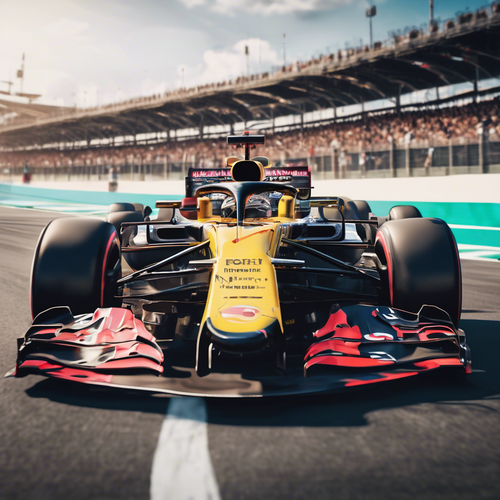Revolutionizing Racing: The Impact of AI and Cloud Technology on Formula One
The roar of engines, the thrill of speed, and the sharp bends of tracks have long defined the essence of Formula One racing. However, in an age where data reigns supreme, the magic of F1 is being reshaped by artificial intelligence (AI) and cloud technology. These innovations offer a glimpse into a future where race strategies, car performance, and fan experiences are amplified in ways previously unimaginable. 🏎️💨
As the sport enters the new era of electric and hybrid technologies, the integration of AI and cloud solutions is not merely an enhancement—it’s a complete reengineering of how teams operate, strategize, and engage with millions of fans worldwide. From predictive analytics to real-time telemetry, the world of Formula One is experiencing a digital renaissance. 🌍
Decoding Data: The AI Advantage
At its core, AI harnesses vast amounts of data to extract insights, enabling teams to make split-second decisions that can mean the difference between winning and losing. During a race, telemetry data—information collected from the car’s sensors—streamlines to engineers and strategists in real time. This includes critical metrics such as tire performance, fuel efficiency, and engine temperature.
According to recent reports, teams can analyze over 3,000 data points per second, leading to decision-making processes that are faster and more informed. McLaren, for instance, has developed an AI-infused software platform that predicts race outcomes based on historical data and real-time inputs, allowing them to tweak race strategies on the fly. As Fernando Alonso once noted, “Racing is a sport of timing. With AI, even a millisecond can be the winning margin.” ⏱️
Cloud Computing: Driving Team Efficiency
Cloud technology plays a crucial role in the F1 landscape, streamlining operations by making large datasets accessible anywhere, anytime. Teams like Red Bull Racing utilize cloud platforms to share telemetry data and simulations across global locations, collaborating in real-time regardless of physical boundaries.
This not only enhances communication but also accelerates the design process. During the 2021 season, for example, Ferrari reported a 30% reduction in design timelines by using cloud-based simulations to test aerodynamics and performance before implementing changes on track. With race weekends often requiring rapid iterations, the clouds of innovation have made a significant impact. ⛅️
Enhanced Fan Engagement with AI
The marriage of AI and cloud computing is not limited to internal team efficiencies; it also revolutionizes fan engagement. Formula One has embraced digital innovations, allowing fans to experience the sport in unprecedented ways. AI-powered platforms analyze fan behavior and preferences, personalizing content, recommendations, and even ticket offerings.
This shift has drastically improved the fan experience. F1 TV Pro, the championship’s official streaming service, uses AI algorithms to deliver customized video highlights based on viewers’ interests. Additionally, augmented reality (AR) applications designed through cloud computing provide fans with immersive ways to experience races, feeling the adrenaline rush from their own living rooms. 📱✨
Challenges and Future Directions
Despite the benefits, integrating AI and cloud technology in F1 is not without challenges. The reliance on data means that teams must address cybersecurity threats, ensuring that vital information remains protected from breaches. Furthermore, the balance between human intuition and machine-driven insights is an ongoing debate within the sport. Can AI truly replicate the gut feelings that seasoned drivers and engineers experience on the track?
However, the future holds promise. As Machine Learning advances, expect AI systems to become even more sophisticated in predicting outcomes, while cloud technology will support an ever-expanding network of data-sharing effortlessly. F1’s Chief Technical Officer, Pat Symonds, emphasizes, “Embracing technology opens new dimensions for innovation and strategy. We are just getting started.” 🚀
Conclusion: A New Era for Formula One
The infusion of AI and cloud technology into Formula One racing signifies much more than enhanced performance; it represents a culture shift within an iconic sport. As each season unfolds, this digital transformation holds the potential to redefine competition and elevate fan interaction, placing Formula One on the cutting edge of modern sporting innovation. The race for supremacy on the track is now as dependent on technological agility as it is on driver skill—a thrilling evolution for fans and competitors alike! 🏁

